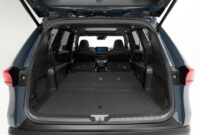And the reason is none other than the entry into force of the Low Emission Zones (ZBE) in those municipalities with more than 50,000 inhabitants. These must be active no later than January 1, 2023, and are already present in some cities that are not Madrid or Barcelona. But taking into account the increasingly complicated context that is coming for cars without the DGT ECO and ZERO label, it is better to be cautious. and take into account the worst-case scenario input.
Although it is true that large cities have increasingly strict restrictions as far as car access is concerned, not many other municipalities presented an impediment to entering their respective downtown areas. But this will end as soon as next year starts, moment in which each city council must present its regulations.
The LEZs will enter into force on January 1, 2023, and this is all we know
Because yes, the ZBE will be the responsibility of each city council, so we could find cities with much tougher restrictions than others. In this way, some municipalities could limit themselves to applying stricter regulations when parking in the SER zone and others could go much further and establish a central zone to which only vehicles with a ZERO label, taxis, VTC, transport have access. public or those who go to a car park or are invited by a resident of that area.
Be that as it may, the vehicles that will experience the most advantages in these Low Emission Zones, regardless of how restrictive they are, will be those that have the DGT ECO and ZERO label. Holders of the first are any vehicle that uses a 48V hybrid (HEV), mild-hybrid (MHEV) system or has an additional LPG or CNG tank.
The ZERO label, for its part, is received by plug-in hybrid cars (PHEV) with a minimum range of 40 kilometers in electric mode and those vehicles that are 100% electric. In this way, owners of hybrid, plug-in hybrid and electric vehicles they will not have to fear for the entry into force of the ZBE on January 1, 2023.
But what about the cars labeled B, C and those that do not receive any badge at all? The latter will be the ones that suffer the most consequences with the presence of the Low Emission Zones, but the cars labeled B and C will gradually go through the tightrope until a possible point of no return; in other words: there could be a scenario in which the restrictions prevent them from circulating in the LEZs.
This is due not only to the parameters that each city council decides to apply, but also due to the requirements of the plan that the Government has to evolve the Low Emission Zones. And it is that as stated in the draft Royal Decree, LEZs that already exist must submit and adapt to existing requirements within four years.
In other words, if in 2027 the Government has established regulations regarding access to Low Emission Zones, all those that come into force on January 1, 2023 must renew their regulations and adapt the new requirements. This means that with a high probability there will be that context in which cars with label B and label C are no longer allowed to circulate not only in central areas, but even enter the city itself.
In the meantime, and regardless of what each council decides in terms of ZBE regulations, anyone who does not comply with the regulation will face a fine of 200 eurosbeing able to reduce the figure to 100 euros with prompt payment.








